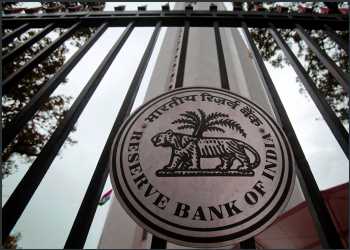India’s central bank decided on Friday to keep its key interest rates unchanged and expanded the government bond purchase programme as policymakers downgraded the growth outlook with the second wave of the coronavirus pandemic taking its toll on economic activity.
At the end of three-day rate setting meeting, the Monetary Policy Committee of the Reserve Bank of India unanimously voted to hold the benchmark policy rate at 4.00 percent. The reverse repo rate was retained at 3.35 percent.
The Marginal Standing Facility rate and the Bank Rate were also left unchanged at 4.25 percent at the meeting.
Also, the committee unanimously decided to continue with accommodative stance as long as necessary to revive and sustain growth on a durable basis and continue to mitigate the impact of COVID-19 on the economy, while ensuring that inflation remains within the target going forward.
The MPC observed that the second wave of COVID-19 has altered the near-term outlook. The economy is projected to grow 9.5 percent in the financial year 2021-22, which is less than the previous outlook of 10.5 percent.
Consumer price inflation was seen at 5.1 percent during 2021-22. Rising global commodity prices pose upside risks to the inflation outlook.
The RBI governor Shaktikanta Das said excise duties, cess and taxes need to be adjusted to contain input cost pressures emanating from petrol and diesel prices.
The MPC said policy support from all sides is required to regain the momentum of growth.
Das unveiled additional steps to mitigate the adverse impact of the second wave of the pandemic.
Das unveiled another round of Government Securities Acquisition Program, or G-SAP 1.0, for the purchase of G-secs of INR 400 billion. And also the RBI will undertake G-SAP 2.0 during this July to September period and conduct secondary market purchase operations.
The bank also decided to extend a special liquidity facility of INR 160 billion to Small Industries Development Bank of India for on-lending/ refinancing through novel models and structures.
He announced a separate liquidity window of INR 150 billion to certain contact-intensive sectors.
Under the scheme, banks can provide fresh lending support to hotels and restaurants, tourism, aviation ancillary services, and other services that include private bus operators, car repair services, rent-a-car service providers, event/conference organizers, spa clinics, and beauty parlours/saloons.
With the economy likely to take time getting back to health, policy will remain accommodative for a long while yet, Shilan Shah, an economist at Capital Economics, said.
Source: Read Full Article
